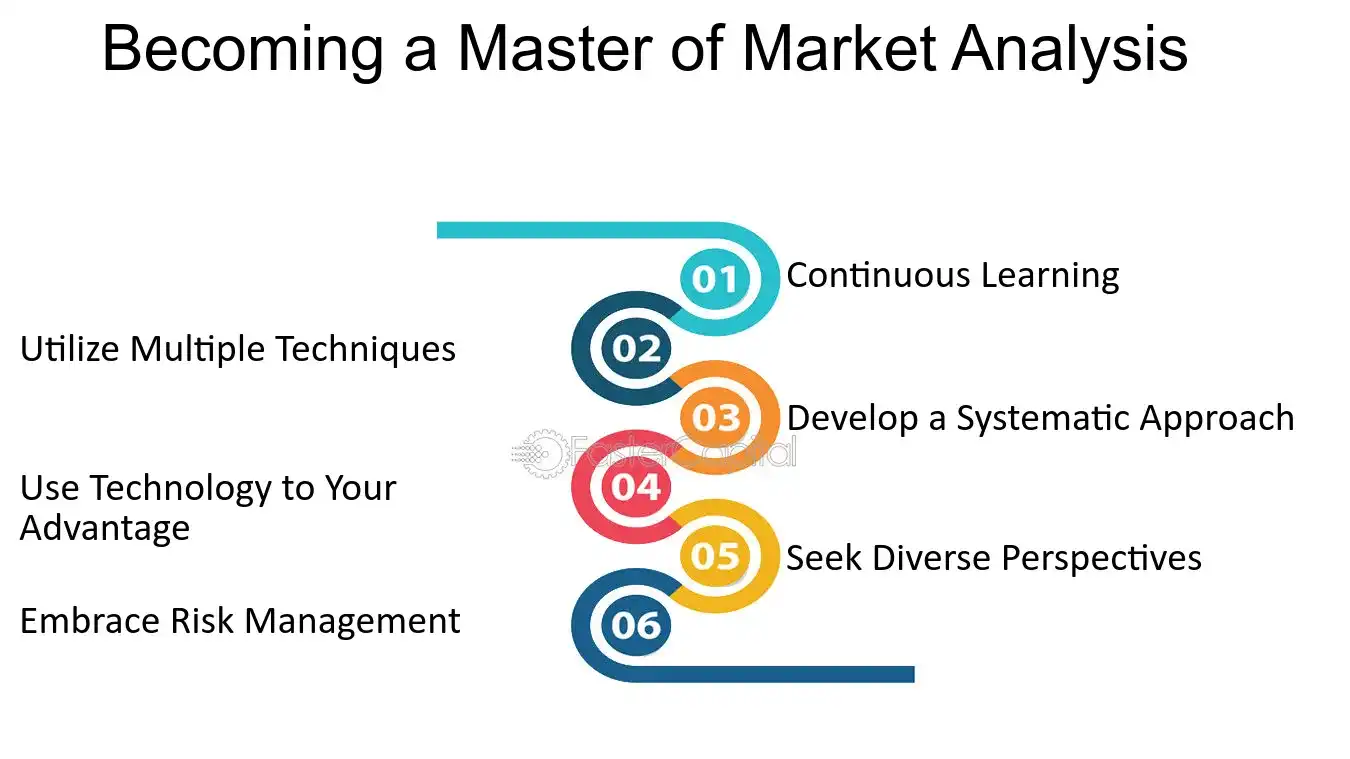Master Market Analysis in 5 Easy Steps
Ellie Moore

Photo: Master Market Analysis in 5 Easy Steps
Market analysis is an essential tool for businesses looking to make informed decisions, identify opportunities, and stay ahead of their competition. Whether you’re launching a startup, expanding into a new market, or strategizing for growth, understanding market dynamics is crucial. In this article, we’ll break down how to master market analysis in just five easy steps, providing you with the insights you need to succeed.
Step 1: Define Your Objective
Before diving into data, it’s essential to clearly define what you aim to achieve with your market analysis. Are you looking to identify potential customers, evaluate competitors, or assess market demand for a new product? Having a focused objective helps you streamline your efforts and ensures your research remains relevant.
Key Questions to Ask:
- What specific goals will this market analysis serve?
- What decisions will be influenced by the insights gathered?
A well-defined objective sets the foundation for the subsequent steps, ensuring your analysis is targeted and actionable.
Step 2: Gather Relevant Data
Data collection is at the heart of market analysis. To build an accurate understanding of your target market, you’ll need to gather both primary and secondary data.
Primary Data: Information collected directly from the source, such as surveys, interviews, or focus groups. This type of data is often more specific and tailored to your needs but can be time-intensive to collect.
Secondary Data: Pre-existing data available through industry reports, government publications, or online resources. While secondary data is quicker to obtain, it may not always align perfectly with your objectives.
Tips for Effective Data Collection:
- Utilize tools like Google Trends, market research reports, and customer feedback platforms.
- Conduct competitor analysis using publicly available financial reports, social media insights, and customer reviews.
- Segment your data collection to focus on demographics, psychographics, and geographic factors.
Step 3: Analyze Market Trends and Dynamics
Once you’ve gathered your data, it’s time to identify trends, patterns, and market dynamics. Understanding these factors will provide you with actionable insights to guide your business decisions.
Key Areas to Focus On:
- Customer Behavior: What are the purchasing habits, preferences, and pain points of your target audience?
- Market Size and Growth: Assess the total addressable market (TAM) and its growth potential.
- Economic Factors: Consider factors like inflation, disposable income levels, and employment rates that can impact your market.
Tools to Use:
- Excel or Google Sheets for data organization and visualization.
- Business intelligence tools like Tableau or Power BI for advanced analytics.
- SWOT analysis (Strengths, Weaknesses, Opportunities, Threats) to contextualize your findings.
Step 4: Identify Key Competitors
Knowing who your competitors are and understanding their strengths and weaknesses is vital to crafting a winning strategy. Conduct a comprehensive competitor analysis by examining both direct and indirect competitors.
How to Conduct Competitor Analysis:
- Identify Key Players: Look for businesses that target the same audience or offer similar products/services.
- Analyze Their Strategies: Evaluate their marketing campaigns, pricing models, and customer engagement tactics.
- Understand Their Weaknesses: Identify gaps in their offerings that you can capitalize on.
Pro Tip: Use tools like SEMrush, SpyFu, or SimilarWeb to analyze competitors’ digital marketing efforts, including SEO rankings and paid ad campaigns.
Step 5: Formulate Actionable Insights and Strategies
The final step in mastering market analysis is translating your findings into actionable insights. These insights should directly inform your business strategy, helping you make data-driven decisions.
Steps to Create Strategies:
- Prioritize opportunities that align with your business strengths and market needs.
- Develop a marketing strategy tailored to your target audience based on your analysis.
- Regularly revisit and update your market analysis to stay current with evolving trends.
Example: If your analysis reveals an unmet need for eco-friendly packaging in your industry, you can incorporate sustainable solutions into your product line to attract environmentally conscious consumers.
Conclusion
Mastering market analysis doesn’t have to be overwhelming. By following these five easy steps defining your objectives, gathering relevant data, analyzing trends, identifying competitors, and formulating actionable strategies you can gain a competitive edge and set your business up for success. Remember, market analysis is an ongoing process that evolves as markets change. Stay proactive, and let data guide your decisions for sustainable growth.
Finance & Investment
View All
July 10, 2025
High Paying Finance Degree JobsUnlock top SEO rankings! Discover how valuable, authoritative, user-focused content, built on E-E-A-T and user intent, drives search success.
Ellie Moore

November 16, 2024
Top 5 Budgeting Apps That Will Save You Money InstantlyDiscover the top budgeting apps that will transform your financial life! Learn how these apps can help you track expenses, save money, and achieve your financial goals. Download now and start saving!
Ellie Moore

November 21, 2024
Maximize Your Retirement Fund with These 5 Simple StrategiesSupercharge your retirement savings with 5 simple strategies! Learn how to maximize contributions, optimize investments, and plan for the future. Secure your golden years today!
Ellie Moore

November 11, 2025
Construction Financing Rates 2025Unlocking Visibility: The Power of Expert SEO Content In today's crowded digital landscape, simply having content isn't enough. To truly stand out, attract your...
Ellie Moore

November 20, 2025
Motorhome Financing Tips for TravelersGo beyond keywords! Discover what expert SEO content truly means, why it's vital for online success, and how it drives rankings & trust.
Ellie Moore

June 4, 2025
Bitcoin News on Yahoo FinanceUnlock online potential with expert SEO content. Build authority, attract ideal audience, rank higher & drive conversions. Dominate your niche!
Ellie Moore
Insurance
View AllSecure your future with Complete Progressive Insurance Protection. Get unrivaled coverage, optimize rates, and achieve peace of mind against risks.
Ellie Moore
Climate change impacts are rising—learn how climate risk insurance offers protection against extreme weather and environmental losses.
Ellie Moore
Discover how artificial intelligence simplifies claims, enhances accuracy, and speeds up insurance processes.
Ellie Moore
Master Essential Direct Auto Insurance to cut costs, optimize coverage, and boost financial security. A must-read for policyholders, risk managers & agents.
Ellie Moore
Switching insurance? Learn key considerations to find the best new provider while avoiding coverage gaps.
Ellie Moore
Enhance your coverage with insurance riders. Learn about their types, benefits, and why they’re crucial for customizing policies.
Ellie Moore
Education
View AllLearn effective classroom strategies to manage ADHD. Discover how teachers can support students with ADHD for better learning outcomes.
Read MoreHelp students develop a love for learning! Discover effective ways to foster a growth mindset in students and promote lifelong success.
Read MoreSocial skills training is key for kids with autism. Learn practical strategies to improve social interaction and communication in children with ASD.
Read MoreThe digital divide limits education access. Explore strategies and initiatives to bridge this gap and ensure global learning equality.
Read MoreDiscover how portfolio-based assessments offer a better way to measure student progress. See how they foster creativity and critical thinking.
Read MoreArts education is key to fostering creativity. Learn why it’s important in schools and how it helps students develop essential life skills.
Read MorePopular Post 🔥
View All
1
2
3
4
5
6
7
8
9
10
Health






Automotive
View All
September 6, 2025
Best Automotive Wheel Covers For Every Car
Wheel covers: More than just looks! Enhance your car's style, protect components, and boost value. Find the perfect covers in our guide.

August 11, 2025
Star Automotive Service Reviews And Customer Care
Driving Trust in auto service: Learn how Star Automotive Service Reviews & exceptional customer care guide you to reliable car repair & peace of mind.

September 11, 2025
Jay's Automotive Gets The Job Done Right
Jay's Automotive: Experience reliable, expert car repair. We get the job done right every time, ensuring your vehicle's safety & your peace of mind.

September 7, 2025
Capital Automotive Services For Every Budget
Don't let car care break the bank! This guide shows how affordable automotive services and smart maintenance keep your vehicle safe and save you money.

August 17, 2025
Why You Need Automotive Paint Protection Today
Safeguard your car's investment! Learn why automotive paint protection is essential today to shield your vehicle from environmental damage & preserve its value.

August 14, 2025
Top Apps For Automotive Needs And Repairs
Discover essential automotive apps for diagnostics, maintenance, navigation, and more. Enhance your car ownership with convenience, savings, and safety.

















